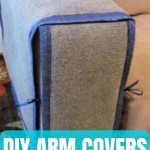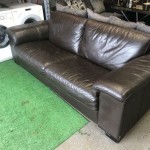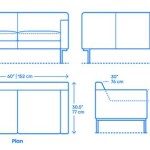```html
Leather Sofa Feels Sticky: Understanding Causes and Solutions
A leather sofa is often a significant investment, representing both comfort and style in a living space. When a leather sofa begins to feel sticky, it can be a source of considerable frustration and concern. This stickiness detracts from the luxurious feel and can even make the sofa unpleasant to use. Identifying the causes of this stickiness is crucial for implementing effective solutions and restoring the leather to its original state.
Several factors can contribute to a sticky sensation on a leather sofa. These factors range from environmental conditions to the improper application of cleaning products and the natural breakdown of the leather's protective coatings. Understanding these contributing elements is the first step in addressing the issue.
Understanding the Common Causes of Stickiness
One of the most common causes of a sticky leather sofa is the build-up of oils, dirt, and body perspiration. Over time, these substances accumulate on the leather surface, creating a tacky residue. These oils, often transferred from skin and hair, can penetrate the leather's pores, especially if the leather is not regularly cleaned and conditioned. Dust and grime also contribute to the stickiness, forming a layer on top of the oily residue.
Furthermore, the type of leather treatment used on the sofa plays a significant role. Some leather conditioners, while initially beneficial, can leave a sticky residue if applied excessively or if the formula is not properly absorbed by the leather. This is particularly true for conditioners that contain heavy oils or waxes. These substances, intended to moisturize and protect the leather, can create a sticky film if not properly buffed and removed after application.
Environmental factors, such as humidity and temperature, can also exacerbate the problem. High humidity levels can cause the natural oils in the leather to become more viscous, leading to a sticky feeling. Similarly, direct sunlight or proximity to heat sources can degrade the leather's protective coatings, making it more susceptible to absorbing oils and dirt. This degradation can also lead to the breakdown of the leather itself, contributing to a sticky or tacky texture.
Identifying the Type of Leather
Before attempting to clean or treat a sticky leather sofa, it is essential to identify the type of leather. Different types of leather require different cleaning and conditioning methods. Applying the wrong products or techniques can further damage the leather and worsen the stickiness.
Aniline leather, also known as pure aniline or full aniline leather, is the most natural type of leather. It is dyed through with soluble dyes and does not have a surface coating. Aniline leather is soft and supple but is also highly susceptible to staining and damage. Semi-aniline leather is similar to aniline leather but has a light protective coating to improve its resistance to stains. This coating makes it slightly more durable than aniline leather but still retains a natural feel.
Protected leather, also known as pigmented leather or finished leather, has a durable surface coating that makes it highly resistant to stains and wear. This type of leather is commonly used in furniture and is relatively easy to clean and maintain. Nubuck leather is a type of top-grain leather that has been buffed to create a velvety surface. It is similar to suede but is made from the outer layer of the hide, making it more durable. Lastly, bonded leather is made from scraps of leather that are shredded and bonded together with polyurethane or latex. It is the least expensive type of leather but is also the least durable and can be prone to cracking and peeling.
Identifying the specific type of leather will guide the selection of appropriate cleaning products and techniques. For example, aniline leather requires gentle cleaning with specialized products, while protected leather can withstand more rigorous cleaning methods.
Effective Cleaning and Conditioning Techniques
Once the type of leather has been identified, the next step is to implement effective cleaning and conditioning techniques to remove the stickiness and restore the leather's original texture. Regular cleaning and conditioning are crucial for maintaining the health and appearance of a leather sofa and preventing the build-up of sticky residue.
For general cleaning, a mild soap solution is often sufficient. Mix a small amount of mild, pH-neutral soap with distilled water. Dampen a soft, lint-free cloth with the solution and gently wipe the leather surface. Avoid saturating the leather, as excess moisture can damage it. Immediately after cleaning, use a dry cloth to remove any remaining moisture.
For more stubborn stickiness caused by oily residue, a specialized leather cleaner may be necessary. Choose a product specifically designed for the type of leather being cleaned. Follow the manufacturer's instructions carefully and test the product on an inconspicuous area of the sofa before applying it to the entire surface. Apply the cleaner sparingly and use a soft cloth to gently massage it into the leather. Remove any excess cleaner with a clean, dry cloth.
After cleaning, conditioning the leather is essential to restore its moisture and suppleness. Leather conditioners help to prevent the leather from drying out and cracking, and they also provide a protective barrier against future stains and damage. Choose a conditioner that is specifically designed for the type of leather being treated. Apply the conditioner sparingly, using a soft cloth to massage it into the leather. Allow the conditioner to absorb for the recommended amount of time and then buff the surface with a clean, dry cloth to remove any excess.
In cases where the stickiness is caused by excessive application of leather conditioner, focus on removing the excess product. Use a clean, dry cloth to buff the surface vigorously. If the stickiness persists, try lightly dampening the cloth with distilled water and buffing again. Avoid using harsh chemicals or abrasive cleaners, as these can damage the leather.
For routine maintenance, regular dusting and vacuuming can help to prevent the build-up of dirt and grime that contribute to stickiness. Use a soft brush attachment on a vacuum cleaner to gently remove dust and debris from the leather surface. Vacuum the sofa at least once a week to keep it clean and free of dust.
Protecting the leather from direct sunlight and heat sources is also crucial for preventing stickiness and maintaining its condition. Avoid placing the sofa near windows or radiators, as these can cause the leather to dry out and crack. Consider using window coverings to shield the sofa from direct sunlight.
In summary, addressing a sticky leather sofa requires a systematic approach. Identifying the cause of the stickiness, determining the type of leather, and selecting appropriate cleaning and conditioning techniques are all essential steps. Regular maintenance, including cleaning, conditioning, and protection from environmental factors, will help to keep the leather in good condition and prevent the return of stickiness.
```
Sticky Leather Or Vinyl What Causes It How To Clean

How To Remove Sticky Stuff From Leather

How To Clean Leather Furniture When It Gets Sticky Arrow

Lederland Fact Or Myth Leather Is Cold And Sticky

20 Leather Repairs You Must See To Believe The Doctor

Does Leather Furniture Make You Hot La Z Boy Southeast

How To Fix Bonded Leather Ling Von Baer

How To Protect Leather Furniture

Tips For Conditioning Your Leather Couch

7 Tips And Tricks To Clean Leather Sofa End Of Tenancy Cleaning Me Blog








